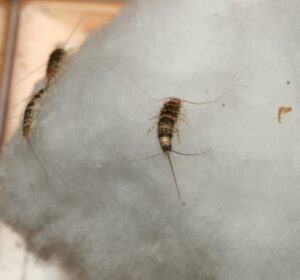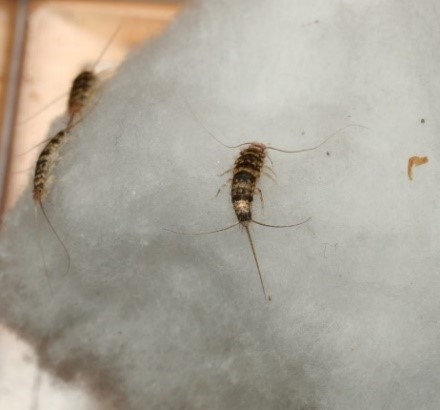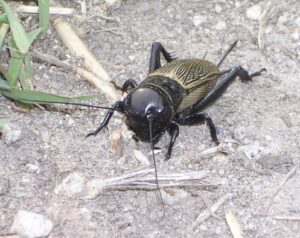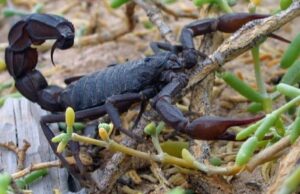Firebrats:
Common Firebrat
General Description
| · The body of an adult firebrat is about 1- 1.25 cm long and marked on the back with numerous dark patches that give the firebrat a mottled gray appearance.
· It is a wingless insect. The young look like small adults.
|

Credit: Klemens Bottig |
Life Cycle and Common Characteristics
- The female aged 5 to 4.5 months begin laying eggs (at 32–41 °C). It can lay up to 6000 eggs in a lifetime of about 3–5 years.
- Egg incubation lasts for 12–13 days.
- Afteregg hatching, the nymphs reach maturity in 2 to 4 months.
- There are several generations each year.
- Common firebrats are most active at night and can run very swiftly.
- The firebrats live under rather unusual conditions, generally in areas not frequented by silverfish. They live outdoors under rocks, bark, and leaf litter, in the nests of birds and mammals, in ant and termite nests, and in similar environments. They are also found indoors in areas associated with heat, such as boiler rooms, or moisture, such as near water pipes. They are found in bathtubs, where they are trapped while seeking food or moisture.
- Firebrats prefer higher temperatures and can be frequently found around ovens or in bakeries and near boilers or furnaces, boiler rooms or tunnels containing steam pipes. They also require some humidity.
- The feeding behavior and preferences of common firebrats are similar to silverfish. They feed on carbohydrates and starches that are also protein sources such as flour, book bindings, dog food, and other materials.
Damages and Economic & Medical Implications
- Firebrats are mostly harmless, but nuisance insects. They do not cause major damage, but they consume small amounts of human foods and contaminate them with their body scales and droppings.
- They can do considerable damage to some natural and synthetic fibers, books and, other paper products.
- Their feeding marks are irregular, and often appear as a surface etching that may not even penetrate the paper.
- Firebrats may also leave yellow stains, especially on linens.




